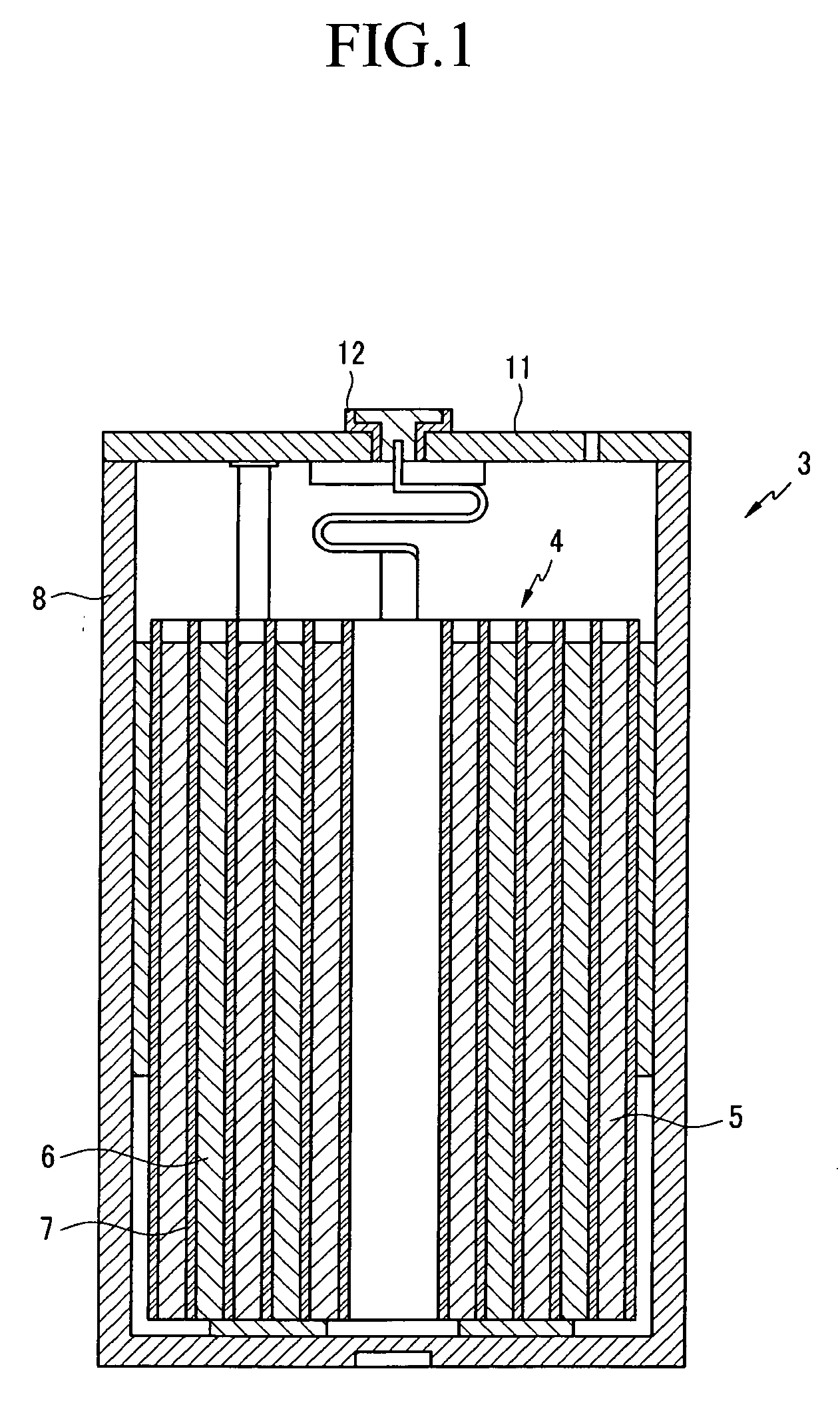Rechargeable lithium battery
a lithium battery, rechargeable technology, applied in the direction of non-aqueous electrolyte cells, cell components, electrochemical generators, etc., can solve the problems of critical defects, low energy density per unit volume, low density of graphite active materials, etc., to improve cycle life characteristics and increase initial formation efficiency
- Summary
- Abstract
- Description
- Claims
- Application Information
AI Technical Summary
Benefits of technology
Problems solved by technology
Method used
Image
Examples
example 1
[0095]90 wt % of Li1.1V0.89Ti0.01O2 as a negative active material, 5 wt % of a graphite conductive agent, 5 wt % of a polytetrafluoroethylene binder were mixed in an N-methylpyrrolidone solvent, preparing negative active material slurry. The negative active material slurry was coated on a copper foil current collector, to fabricate a negative electrode. Herein, the prepared negative electrode had an active mass density (a mixture of an active material, a conductive agent, and a binder forming an active material layer on a current collector) of 2.4 g / cc.
[0096]The negative electrode was used as a working electrode, while lithium was used as a counter electrode. A porous polypropylene film separator was interposed between the working and counter electrodes, and thereafter, an electrolyte solution was injected, preparing a coin type cell.
[0097]Herein, the electrolyte solution was prepared by mixing propylene carbonate (PC), diethyl carbonate (DEC), and ethylene carbonate (EC) in a volum...
example 2
[0098]A coin-type cell was fabricated according to the same method as in Example 1 except for preparing an electrolyte solution by mixing PC, DEC, and EC in a volume ratio of 1:1:1 and adding 5 wt % of ethylene dicyanide.
example 3
[0099]A coin-type cell was fabricated according to the same method as in Example 1 except for preparing an electrolyte solution by mixing PC, DEC, and EC in a volume ratio of 1:1:1 and adding 10 wt % of ethylene dicyanide.
PUM
| Property | Measurement | Unit |
|---|---|---|
| density | aaaaa | aaaaa |
| total weight | aaaaa | aaaaa |
| weight | aaaaa | aaaaa |
Abstract
Description
Claims
Application Information
 Login to View More
Login to View More - R&D
- Intellectual Property
- Life Sciences
- Materials
- Tech Scout
- Unparalleled Data Quality
- Higher Quality Content
- 60% Fewer Hallucinations
Browse by: Latest US Patents, China's latest patents, Technical Efficacy Thesaurus, Application Domain, Technology Topic, Popular Technical Reports.
© 2025 PatSnap. All rights reserved.Legal|Privacy policy|Modern Slavery Act Transparency Statement|Sitemap|About US| Contact US: help@patsnap.com



